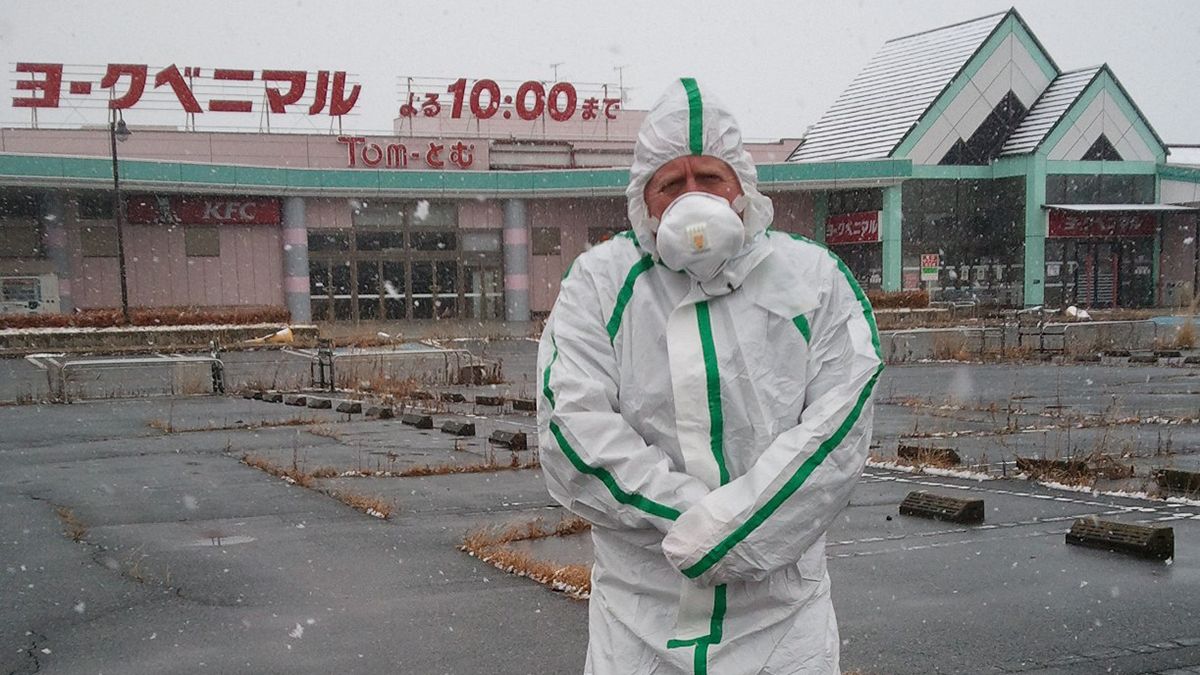‘Silent Disasters’ visits Fukushima on the occasion of the third anniversary of Japan’s earthquake-tsunami. Euronews reporter Chris Cummins takes up the story:
“This is Koikenaganuma a temporary housing complex, which was built to shelter families that were living in and around Fukushima at the time of the tsunami. The nuclear plant is 36 kilometres away along the coastline. Ordinary people live here shopkeepers, farmers, but since 2011 their lives have changed completely.”
The problems for those who lived around the nuclear plant continue to cause extreme stress; the loss of jobs and homes are clear examples, but there are also unseen difficulties as one woman living in the Koikenaganuma temporary complex explained: “We lost our home and the hospital where I worked closed. Everyone scattered. I worry about the future. I’m still paying the mortgage on a house I cannot live in. I’m worried we can extend the loan, but we can’t live in the house.”
A grandmother pines for her previous life and is furious about what has happened to her:
“We were told we could return by April 2016, but the clean up is getting nowhere. I am innocent, but because of the nuclear accident it’s like I am jailed, under arrest. We are not free. This is prison, I am very sad. All because of this nuclear plant.”

Mention radiation and the health issues come to the fore.
Euronews visited a hospital close to the site.
Reporter Chris Cummins said: “The full medical implications of the nuclear disaster at Fukushima have yet to be realised, but here at Minamisoma 23 kilometres from the plant, Dr Tomoyoshi Oikawa has some interesting ideas.”
Dr Oikawa told us: “The biggest problem is the change in population. Most of those who returned after evacuation are elderly, only a very small number of children have come back. If this continues the city will die. The wider world thinks the contamination here is very high. Our research shows the area is safe, but people have not come back because they believe rumours.
“At the time of the explosion contamination was very high. I checked my own body so I know, but after six months my contamination had halved. Now it is minuscule. If the food chain is controlled there is no chronic contamination. The mental damage is more significant for those in temporary housing. The number of strokes have gone up. I don’t think it’s radiation. I think it’s stress related.”
Most people are unaware of the legal responsibilities placed on local governments to look after citizens hit by natural disaster.
Hidekiyo Tachiya, the mayor of Soma City, told us: “The Disaster Relief Act requires us to provide housing for the victims, that is the law. The victims’ daily needs are their own responsibility, even if their home has been destroyed. But we believe we have a moral responsibility to help our people.”
The role of Tepco the nuclear plant managers has come under much scrutiny.
Chris Cummins went to meet with an employee of Tepco, the engineer made it clear his identity was to be kept secret A he feared for his job.
The man told us: “Tepco has lost the trust of the Japanese people.They are covering up how badly the ground water has been contaminated. When they have a major problem they report it, but when there is a leak into the water around the tank for example they don’t have to say anything. The clean-up is far from finished there is an enormous amount of radiation debris remaining.
He concluded: “Tepco say it will take 40 years. I believe it will take far longer. Human beings are stupid we always make mistakes. This dangerous technology should not be used. I believe we should move away from nuclear energy.”
Some 475,000 people were forced to evacuate areas hit by the 2011 earthquake, tsunami and nuclear disaster. Three years later, around 270,000 of these evacuees are still displaced and in temporary housing – including around 50,000 people for whom returning home to Fukushima may never be possible at all.

Nahara town councillor Kiichi Matsumoto recalled the dreadful events: “The government announced a three kilometre radius evacuation around the plant on the evening of 11th March. That was after we had watched the whole thing on television. We received a call from Tepco in the early hours of March 12 saying there was a dangerous situation developing at the plant. We thought there would be a hydrogen explosion at the plant sooner or later. We now know the explosion had already happened when we got the call on March 12. Tepco didn’t really know what was going on. We knew we had to evacuate, so we contacted all the local authorities to prepare to evacuate.”
Not everyone left though. Some stayed, like one man we spoke to.
He told us: “I wasn’t planning on staying at first, but those who evacuated left cats and dogs tied up. When I saw them without food and water I wanted to help, that’s how it started. I never thought it would continue, it’s been three years now. The situation hasn’t changed.
On the wider issue he has strong views: “I thought Japanese nuclear power was 100 percent safe. The United States, Chernobyl and Japan have all suffered nuclear accidents. After the explosion nobody knew what to do. Tepco and the government didn’t know how to deal with it. Yet the world still wants nuclear energy, this is ridiculous. The next nuclear disaster will happen in Europe. A clean up cannot be done. Tepco lied from the start. Tepco is a den of iniquity.”
As the clean up continues, the people around Fukushima say they feel forgotten.

Links:==Norwegian Refugee Council==
